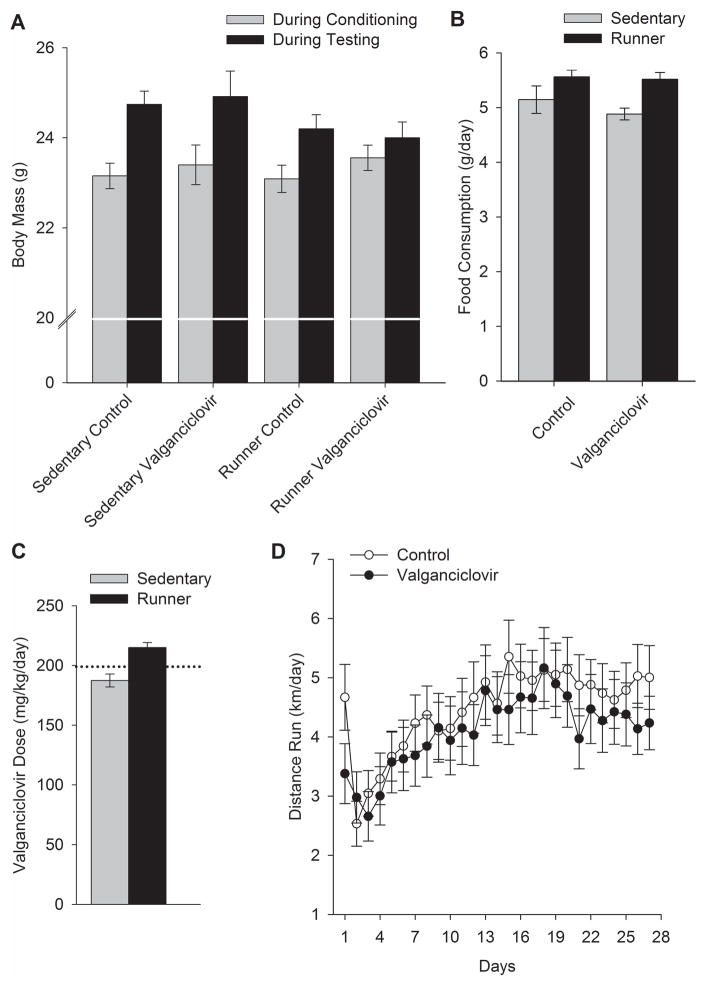Figure 2.
Body mass, chow consumption, valganciclovir dose received, and wheel running over the course of the study. A) Average body mass (g) (± SE) shown separately for each group during conditioning (i.e. before runner/sedentary and valganciclovir/control chow assignments were made) and during testing (i.e. at the end of runner/sedentary and valganciclovir/control chow phase of the experiment). Body weights slightly increased from conditioning to testing, significantly more so for sedentary mice than runners. B) Average food consumption (g/day) (± SE) shown separately for each group. Food consumption was higher among runners. C) Average valganciclovir dose received (mg/kg/day) (± SE) shown separately for sedentary and runner mice receiving valganciclovir chow. Runner mice exceeded the desired dose of 200 mg/kg/day of valganciclovir. D) Distance run (km/day) (± SE) shown separately for mice receiving control chow and mice receiving valganciclovir-infused chow. Valganciclovir did not affect running. Escalation of wheel running over the first 18 days is typical for mice.

